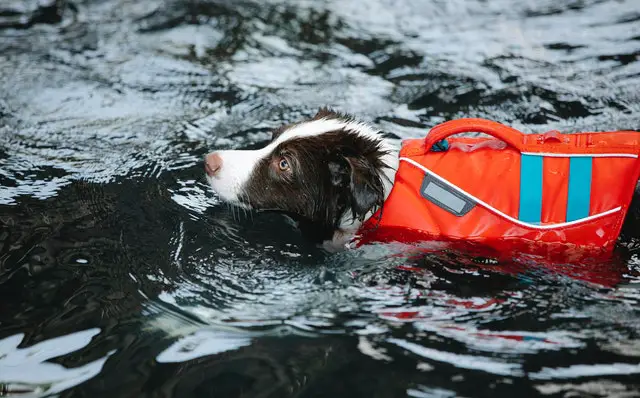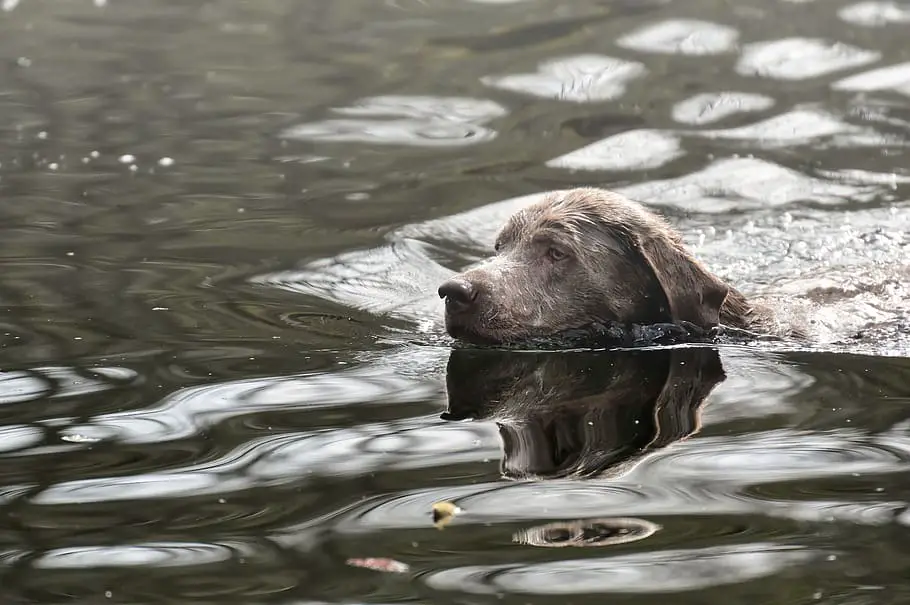Floods are one of the most common natural disasters in the U.S. They can be the result of prolonged rain or snow, but they can also come quickly and without warning. Flash floods can result in damage to your home and property as well as endanger the lives of your loved ones including your dogs. Safety tips for all are a must during these times.
In this article, we will be listing down various practical and logical suggestions on how to properly take care of your furry friends before, during, and after tornado and hurricane season.
Richard Green of the American Society for the Prevention of Cruelty to Animals (ASPCA) says: “If we wait for confirmation that a disaster would go one way or another, we’d never be prepared. You have to lean forward. If you’re not embedded and in position, animal lives will be lost.” Prior preparation is key in spelling the difference between survival and tragedy.
With that said, here are some essential dog safety tips and precautions that will come in handy when rough waters come knocking on your door. We took the liberty of splitting them down into two sections to make them easier to digest and remember:
Safety and Dog Care Tips for Owners
- Bring your dog inside and go up to the highest floor in your house.

- Move all dog toys and training equipment that may get damaged or get lost in the flood.
- Place all your dog’s health documents, medicine, food, and other essentials in a sealed, waterproof go-bag.
- Evacuate immediately when you are advised to do so by your state and local authorities. Make sure to bring your dog with you — do not make the mistake of leaving them behind. The PETS Act states that household pets and service animals be included in emergency preparedness operational plans and rescue evacuations.
- If you are caring for senior or handicapped dogs, consider getting a ramp or doggy stairs so they could be comfortable climbing up and traveling inside a car if you have to evacuate.
- Here’s a great life hack: enter your address on FEMA.gov to see if your area is prone to flooding.
- Study the different flood alerts issued by the National Weather Service so you and your family can respond accordingly.

- As early as now, figure out the place where you will take your pets in the event of immediate evacuation. It could be a relative or a friend’s home, or even a pet-friendly hotel located far from the affected area. You can also try calling the local Red Cross office in your city to ask for assistance in looking for pet-friendly shelters. It would also be wise to have several options in mind, in case certain roads are blocked and you have to change directions.
- Establish good relationships with your neighbors. Get their contact number so when a flash flood hits while you’re away, your buddy can evacuate your dog for you. Show them where to get your dog’s go-bag and then make arrangements on where to meet afterward. Extra points if your neighbor is a dog lover too.
- Organize an emergency “go-bag” to take with you if you have to evacuate with your dog in the event of a disaster. It should contain essential items that you and your dog will need while you are away from home. These include bowls, leashes, plus important documents like registration numbers, proof of ownership, and vaccination history. You should also bring their medications and prescriptions as well as a first-aid kit, some dog food, and bottled water. Put a label on your go-bag and place it in the designated place. Extra tip: get a second go-bag to keep in your car.
Reminders for Dog Owners
- Do not make the mistake of leaving your tied dog outside when it’s raining or flooding outdoors.
- If you are keeping your dogs in the garage or a basement, make sure to take them upstairs to the highest level of your house during a flood.
- Do not wait until the last minute to evacuate. Your local authorities will always recommend that you move ahead of time while access roads are still available. The longer people wait, the bigger the risk for their family and dogs to be stranded. Grab our emergency “go bag” and follow the directions from authorities, and do not go off route.
- Some people try their luck and make the jump for it even if the water outside is rough. Do not walk or swim with your dog in moving water. The current can knock you and your dog down which could lead to serious injuries.
- If you do manage to thread the water, do not push your luck and go driving over bridges that sit above fast-moving water. Stay in a highly elevated area and call for rescue.
- You must consider buying life preservers for you and your dog even if you are a capable swimmer. Also, do not assume that your dog can swim. As much as pooches enjoy the water, they are not natural swimmers and can panic if put in stressful situations.

- This is a no-brainer, but it happens: do not let your dog drink floodwater. That contaminated water is teeming with chemicals, sewage, gasoline, and other substances that can make you and your dog gravely ill. Make sure to keep a supply of bottled water until the authorities confirm that tap water is safe to drink.
- Another mistake many dog owners seem to commit during floods is letting their dogs stay wet for extended amounts of time. Experts say that wetness can cause inflammation of the skin, which is a breeding ground for bacterial and fungal infections. Pack a towel for your dog in that go-bag to dry him off.
- After the rain ceases and flood subsides, do not let your dog go roaming outside just yet without supervision. The streets are filled with broken glass, loose nails, sharp sticks, and other objects that can injure or kill your pet.
- Perhaps the best advice we could give you during disasters like this is to not panic. Your dog feeds off your energy. if you are not cool during stressful situations your dog would become nervous too.
Final thoughts
In a crisis like floods, many people try and wait it out at home. That is often not the best option for you and your dog especially if you are staying in flood-prone areas. Stay informed and sign up for alerts from the Emergency Alert System (EAS) and National Oceanic and Atmospheric Administration (NOAA) Weather Radio.
If you live near a river or a lake, you should also sign up for text alerts from the United States Geological Survey to find out if that body of water is rising above the critical level. Feel free to share these dog safety tips on your social media pages with your dog care and precautions during floods. Don’t forget to tag us so we could read your comments.









